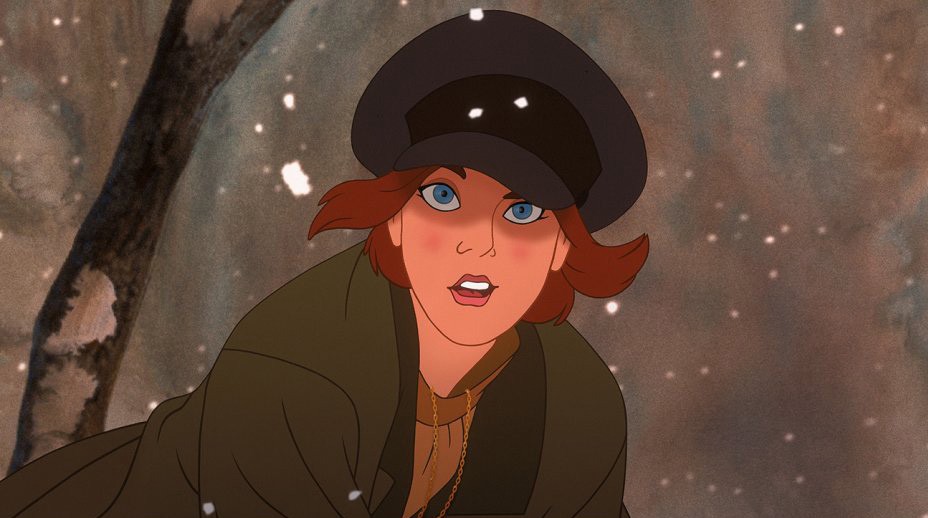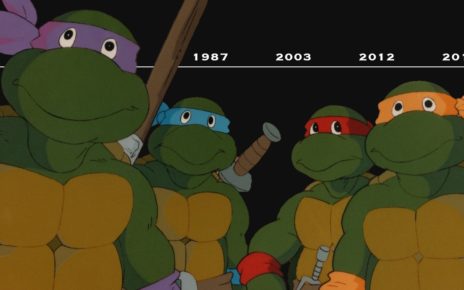Eds. Note: Since this story was published in November 2017, Disney acquired 21st Century Fox for $52.4 billion—which we thought meant that Anastasia would become a Disney princess by default. But it doesn’t!
My childhood obsession with Anastasia began the moment I saw the trailer on TV. I was 6 years old at the time, and I’m pretty sure I convinced my parents to take me to see the movie on opening weekend. I made my cousins and friends act out scenes from the movie whenever they visited my house. (I still have yet to live this down.) I probably burned a hole in my VHS copy from so many repeat screenings. Those screenings also burned the image of the 20th Century Fox logo into my brain.
Needless to say, I’ve been defending Anastasia’s place outside the Disney Princess Canon for a good 20 years now.
Throughout these two decades, I’ve gotten into near screaming matches with people who think they know this movie’s origins better than I do. (In retrospect, I don’t know why anyone hung out with me.) I just couldn’t understand why no one else knew that Anastasia was a Fox film. Anya was never included in the Official Disney Princess Lineup. She didn’t make appearances in the parks. She never got her own short-lived spin-off show on the Disney Channel. Did y’all just think Michael Eisner was hiding her in a broom cupboard somewhere?
The Mouse may have dominated animation in the ’90s, but he was far from the only one in the game.
Over time I’ve realized that I was (and am) a huge nerd, and the vast majority of moviegoers don’t care to distinguish between studio animation canons. I can see how people automatically group Anastasia in with the many Disney Princess movies of the ’90s. It was released during the Disney Renaissance, after all. But I’m here to honor Anastasia’s place as one of the top-grossing and most memorable animated films produced outside of the Disney machine. The Mouse may have dominated animation in the ’90s, but he was far from the only one in the game.
Disney’s influence on Anastasia runs deep, starting with the film’s directors, Don Bluth and Gary Goldman. Bluth and Goldman got their start at Disney animation in the 1970s, working together on films like The Rescuers and Pete’s Dragon. Any Disney history nerd knows that the 70s and 80s were a rough time for the Mouse’s animation arm. Lost after Walt’s death, there was a general decline in quality of the films developed and the studio failed to produce a major box office success aside from The Rescuers.
Disappointed with what was going on at Disney, Bluth and Goldman did what all industrious creators do — they started working on their own films with Disney colleague John Pomeroy out of Bluth’s garage. By the end of the decade, they had enough interest in their work from outside investors that they resigned from Disney and started their own independent production company. Don Bluth Productions faced highs (the release of cult favorite The Secret of NIMH) and lows (unsuccessfully dabbling in arcade games) before going bankrupt in the mid 1980s. In 1985, they partnered with businessman Morris Sullivan, moved operations to Ireland, and reemerged as Sullivan Bluth Studios. What followed were several years of successes — including An American Tail and The Land Before Time — that left Disney shaking in their boots.
Of course, Bluth’s reign on the animation throne was short-lived. 1989’s The Little Mermaid kicked off the “Disney Renaissance” and saved Disney’s animation arm. With the financial success of Disney’s feature films, both at the box office and in merchandise, other studios wanted in on the action. In 1994, 20th Century Fox brought Bluth and Goldman in to run Fox Animation.
During this time, Disney drew inspiration from classic fairy tales, folklore, literature, and history for many of their stories, with a tendency to leave out any of the gruesome bits (e.g., The Little Mermaid committing suicide after her prince marries someone else, and basically everything in The Hunchback of Notre Dame). Princesses were particularly popular; Bluth and Goldman had already made their own attempt with 1994’s Thumbelina, also based on a Hans Christian Andersen story. Fox picked up on this trend in their own way, and insisted that Bluth and Goldman adapt one of their existing properties with a plucky female lead into an animated film. They presented the team with options such as My Fair Lady and The King and I.
Bluth and Goldman eventually settled on the 1956 Yul Brynner/Ingrid Bergman film Anastasia. The original film definitely has the trappings of your standard animated princess movie: young girl longing to find her place in the world stumbles into high society and reluctantly falls in love with a con man with a heart of gold. The film never explicitly states that Bergman’s character is in fact a Romanov, but it’s heavily implied.
The plot of the animated film follows the original nearly to a tee, but brings in some more fantastical elements, like an undead villain and a bat voiced by Hank Azaria. The animated film also leaves little doubt of Anastasia’s status as a Romanov, cementing her place as a Real Animated Princess.
Aside from the fact that the film was based on an existing Fox property, I don’t think that Disney would’ve touched the true story of Anastasia and the Romanovs with a ten foot pole. While there were rumors that some members of the Romanov family had survived the Russian Revolution, in reality the family was executed by the Bolsheviks in 1919. Fox had to do a fair amount of imagining to make this story work for a family audience. Bluth and Goldman already had a fairly successful track record of taking on darker themes in their animated films, though. I mean, An American Tail is about a family of Russian-Jewish mice who flee to America after their home is destroyed by cats/the Cossacks. Not exactly The Little Mermaid.
Several other major studios upped their animation game in an attempt to compete with Disney during the ’90s, but few of these attempts matched The Mouse’s financial success. Anastasia ended up being a huge commercial success, leading to merchandise, a spin-off movie, and even a short-lived ice show. Perhaps this was because of the many Disney-esque elements of the movie, namely the Cinderella narrative and the big Broadway score. But it ultimately proved that Disney didn’t have a monopoly on princess stories and that those stories could be told in a different, darker way.
The ’90s were a great time for animation in general, but I feel like we miss a huge chunk of the story when we forget that there were studios other than Disney pushing the artform forward at the time. They may not have been as commercially successful than Disney’s juggernauts, but many of these films left a huge impact on kids growing up at the time, some of whom are coming up in the animation ranks now. I devoured animated films growing up, and many of the non-Disney films left more of an impact on me than any character I’ve met in a boiling hot corner of the Magic Kingdom. These studios were throwing a ton of spaghetti at the wall to see what stuck. They weren’t afraid to take a risk on something like a totally fabricated story of a dead Russian princess. And honestly, that’s kind of inspiring.
Thanks for reading The Dot and Line, where we talk about animation of all kinds. Don’t forget to for this article and follow us on Twitter and Facebook.





